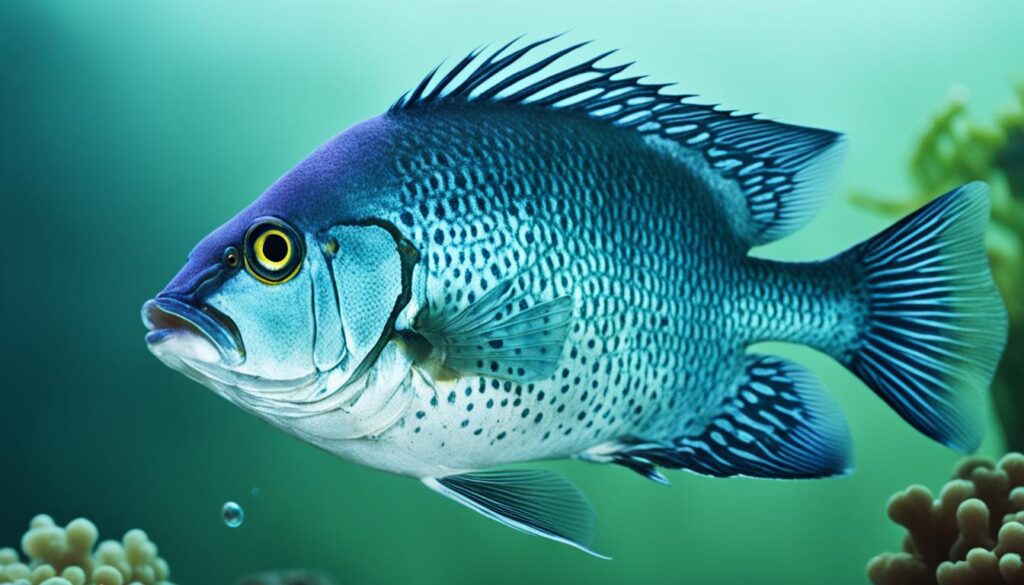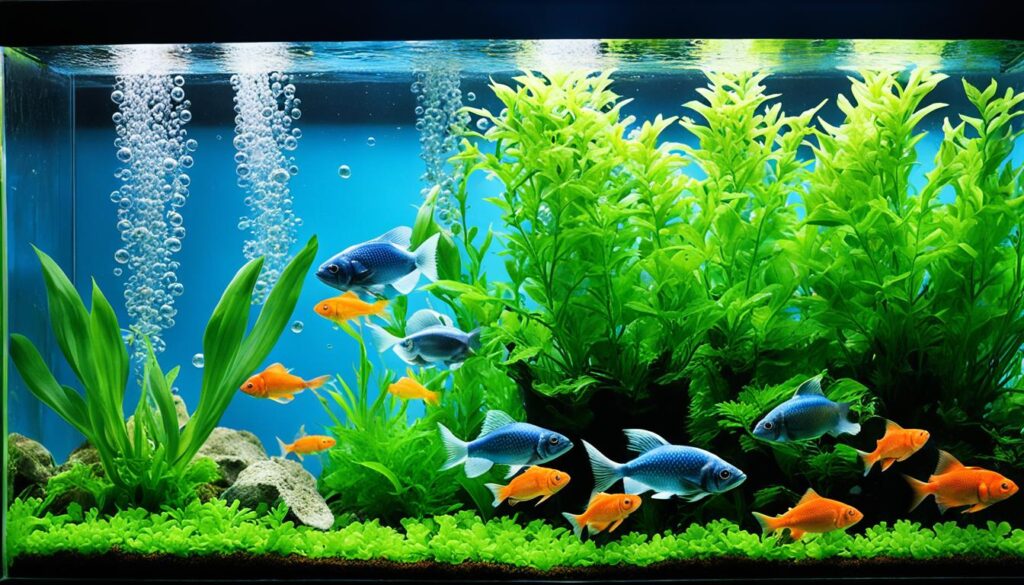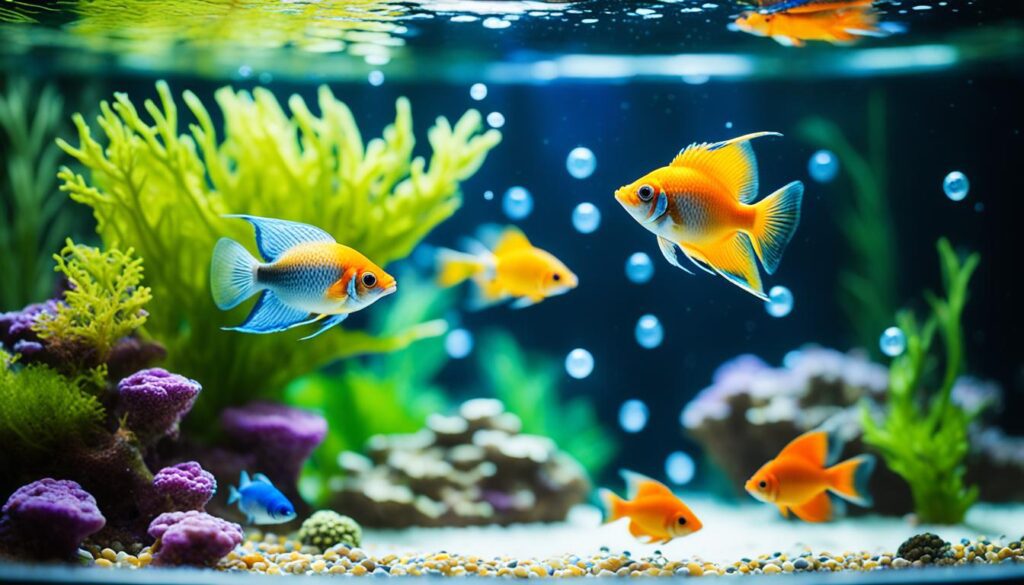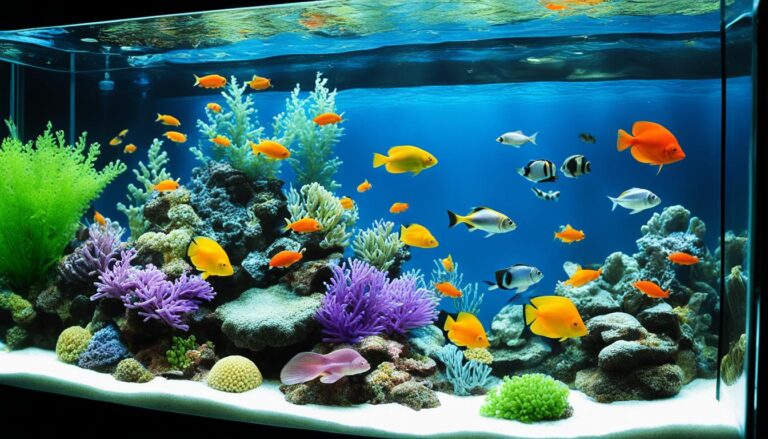Oxygen is absolutely essential for keeping fish healthy and energetic. But finding the right balance of oxygen in your aquarium can be more complex than it seems. In a well-maintained tank, the right amount of air helps keep oxygen levels stable, while also aiding gas exchange at the water’s surface. Monitoring this environment closely is key to ensuring your aquatic pets stay safe and comfortable.
While we often focus on not having enough oxygen, too much oxygen can actually cause problems. Over-oxygenation can stress out fish, lead to diseases, and even mess with the water’s pH balance. As we get better at managing oxygen levels, it’s important to keep an eye on them. A dissolved oxygen meter is a great tool for making sure your tank stays in a safe range.
Different fish have different oxygen needs. For example, bottom dwellers and shallow water fish often require specific oxygen levels. And keep in mind that cold water holds more oxygen than warm water, so temperature affects how much aeration is necessary. Plus, the more crowded your tank, the more oxygen your fish will need.
Maintaining steady oxygen levels is crucial for the long-term health of your fish. By staying informed and keeping a close watch on your tank’s conditions, you can ensure a healthy, happy environment for all your aquatic pets.
Understanding Oxygenation in Aquariums

Oxygen is a vital component of a healthy aquatic environment and essential for fish respiration. If you’re into aquatics, understanding how dissolved oxygen works is key to maintaining balance in your aquarium. Let’s explore the role oxygen plays and how to keep it at the right level.
The Role of Oxygen in Aquatic Ecosystems
Fish need dissolved oxygen to breathe, which they get through their gills. During the day, aquatic plants help out by producing oxygen through photosynthesis. But at night, both fish and plants consume oxygen, which can lower its levels in the water. That’s why keeping track of this oxygen cycle is important.
The exchange of gases at the water’s surface is another critical way oxygen gets back into the tank. This natural process helps maintain healthy oxygen levels, and understanding it is key to keeping everything balanced.
Methods of Introducing Oxygen into Your Tank
Aeration is one of the best ways to boost oxygen levels in your aquarium. Using air pumps and air stones not only increases dissolved oxygen but also creates surface agitation, which improves gas exchange. Filters and waterfall setups can also help by circulating the water, promoting better oxygenation. Positioning these devices correctly is important to ensure your tank stays oxygenated and thriving.
Recognizing the Signs of Proper Oxygenation
When your tank has enough oxygen, your fish will be active and swim throughout the aquarium. Healthy fish will explore the tank without signs of distress. However, if you notice fish gasping for air at the surface or acting sluggish, it could mean oxygen levels are too low and need adjustment.
Regularly checking oxygen levels and watching your fish’s behavior are good ways to stay on top of their health. It’s all about knowing the signs of both proper and inadequate oxygenation to keep things balanced.
Every aquarium is unique, with factors like temperature, stocking levels, and water quality affecting oxygen availability. Understanding these variables and using the right aeration techniques ensures your aquatic ecosystem will thrive, promoting strong fish respiration and overall health.
Identifying the Risks of Over-Oxygenation

Oxygen is essential for aquatic life, but too much can harm them. High oxygen levels can cause oxygen stress in fish. This disrupts their body functions and can lead to serious health issues.
The Link Between High Oxygen Levels and Fish Stress
When oxygen levels in water rise, it can throw off the pH balance. High pH levels are bad for fish. They cause stress, erratic swimming, and even death if not fixed quickly.
Gas Bubble Disease: Causes and Symptoms
People often ask about bubbles in fish tissue, known as gas bubble disease. It’s caused by too much dissolved oxygen. This forms gas bubbles in fish’s blood and tissues. It can damage fish tissue and be deadly.
How pH Fluctuations Can Impact Fish Health
Keeping water chemistry, like water acidity, stable is key for fish health. Changes in pH are harmful. They cause stress and harm. Stable pH keeps aquatic pets healthy now and in the future.
Condition |
Data Range |
Impact |
|---|---|---|
Hypoxia in Chesapeake Bay |
634–658 |
Increased dead zones and stress on marine ecosystems |
Eutrophication-induced hypoxia |
1707–1745 |
Significant habitat loss and decreased aquatic health |
Oxygen minimum zones |
33–37 |
Reduced habitats for tropical pelagic fishes |
Metabolic prioritization under hypoxia |
68–77 |
Shift in energy use affecting growth and reproduction |
These stats show how vital proper oxygen and pH balance are for aquatic pet health and aquatic life diversity. Knowing and managing these factors is crucial for a healthy aquarium. It matters for experts and beginners alike.
The Delicate Balance of Water Temperature and Oxygen Content

Water temperature and oxygen solubility play key roles in keeping aquatic ecosystems healthy. When temperature changes, it affects oxygen levels. This, in turn, impacts the life of water species. It’s important to understand how these elements work together underwater.
Effects of Temperature on Oxygen Solubility in Water
Oxygen in water is greatly influenced by temperature. In cold water, more oxygen can dissolve, which is good for species needing lots of oxygen. But, when water gets warmer, less oxygen can stay dissolved. This is bad for fish and other life forms. Anglers need to grasp this concept because it affects where fish are found, making cooler waters better for fishing.
Thermocline: The Oxygen Rich Layer in Natural Habitats
The thermocline is a unique layer in big water areas like lakes and oceans. It’s where water temperature changes sharply. This layer has a lot of oxygen, making it a perfect place for many species. Fish like to hang out here where the temperature and oxygen are just right. Knowing about the thermocline helps us keep water habitats balanced and aids fishermen in finding the best fishing spots.
To wrap it up, water temperature and oxygen are key to the health of water-based ecosystems. By watching these factors, people who care for the environment can help keep it in good shape. And, fishermen who understand these ideas can find better places to fish, making their trips more successful.
Can Too Much Oxygen Harm Your Fish?

Oxygen is vital for your fish, but too much can hurt them. It’s important to find a balance to keep your aquarium safe and healthy. This ensures your fish thrive in their home.
Too Much of a Good Thing: When Oxygen Turns Harmful
Too much oxygen can cause problems like oxygen toxicity. It can also make the pH levels go wrong, stressing your fish. This might lead to gas bubble disease, where fish get bubbles in their tissues. This condition can be deadly.
Detecting and Addressing Over-Oxygenation Issues in Home Aquariums
Watching oxygen levels is part of good aquarium care. If you see fish swimming strangely or gasping, you may need to adjust aeration. Using oxygen meters can help keep levels in the safe range of 6-8 mg/L.
For advice on managing aquarium oxygen, check this resource.
Safeguarding Your Fish Against the Dangers of Excessive Oxygen
To prevent too much oxygen, check your aquarium often. Adding plants like Hornwort helps control oxygen levels. Also, using air stones or water pumps correctly can avoid over-oxygenation.
Oxygen Regulation Method |
Benefits |
Recommended Levels |
|---|---|---|
Water pumps and air bubblers |
Enhances oxygen circulation and distribution |
DO Level: 6-8 mg/L |
Plant introduction (e.g., Eelgrass, Green Cabomba) |
Naturally balances oxygen levels through photosynthesis |
Oxygen Saturation: 80-110% |
Adjusted aeration systems |
Controls surface agitation, prevents gas bubble disease |
Oxygen Saturation |
Knowing about oxygen’s role and risks helps keep your fish safe. With the right measures and tools, you can make sure your aquarium is healthy. Remember, keeping oxygen levels balanced is key for your fish’s well-being.
Tips for Maintaining Optimal Oxygen Levels

As an aquarium maintenance enthusiast, I’ve found that optimal oxygen levels are vital. They keep your healthy fish and their environment thriving. Here are some important strategies for a perfect aquarium habitat.
- Maintain a well-setup aeration system to efficiently supply oxygen.
- Avoid overstocking the aquarium to prevent unnecessary oxygen depletion.
- Select wider, shallower tanks as they provide better surface area for oxygen exchange.
- Implement consistent temperature control to manage oxygen solubility and avoid stress on fish.
Keeping an eye on your aquarium’s balance is essential for its health. Let’s dive into what you should monitor:
Parameter |
Impact |
Suggested Action |
|---|---|---|
Ammonia Levels |
High levels can cause fish stress and illness. |
Perform regular water changes and check filter efficiency. |
CO2 Levels |
Imbalance can lead to oxygen depletion, affecting fish and plant health. |
Adjust CO2 systems, increase surface agitation, add air stones. |
Water Temperature |
Affects oxygen solubility and overall ecosystem balance. |
Use aquarium heaters or coolers to maintain stable temperatures. |
Nutrient Levels |
Excess can encourage harmful algae growth, lowering oxygen levels. |
Limit overfeeding, maintain regular cleaning routines. |
A well-kept aquarium is more than clean water. It’s about creating a supportive environment for aquatic life. By following these tips, you can ensure optimal oxygen levels. This greatly benefits your aquarium’s ecosystem.
The Importance of Regular Monitoring and Adjustment
As an avid aquarist, I’ve learned a lot about keeping fish. One key is diligent aquarium monitoring. The amount of oxygen in the water, or DO, is very important. It can change quickly, affecting the fish well-being. For healthy water, aim for a DO level around 8-9 mg/L. Below 1 mg/L, and the fish can’t survive.
Keeping my fish healthy means using different tools to check the oxygen. Whether you have a small tank or big ponds, knowing how to use these tools is crucial. I make sure to follow the instructions for my DO meter. This helps me keep my aquarium in good shape.
Maintaining a healthy tank involves more than just watching oxygen levels. I also think about tank size, water temperature, and aeration. Warm water holds less oxygen, and too many fish can lower the DO. Watching for signs like fast gill movements tells me if the oxygen is too low. I check my tank every week and make changes when needed. This keeps the water perfect for a thriving underwater world.








